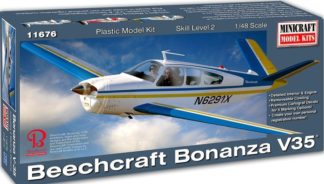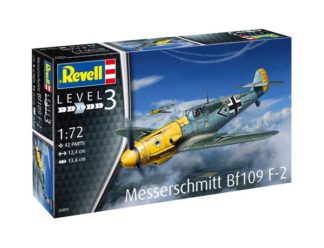Description
The shark-like profile of the Messerschmitt Me.262 Schwalbe and its almost matchless abilities at the time have given it a high profile despite its lack of practical effect on the outcome of WWII. If Der Fuhrer had been a little less prone to meddling however, the effect of its presence may have been felt more by the bomber streams than it was. That’s if they could have solved the metallurgy of the engines to obtain sufficient time before they burned themselves to oblivion. That’s a lot of ifs, but if we concentrate on the actual performance of it, it’s still an impressive aircraft that was superior to the British Meteor in many respects, using axial flow jet engines and swept outer wing panels together with an efficient aerodynamic shape. It first flew with a prop in the nose and dummy engines, dragging its tail along the ground until airborne, but this was changed once the engines were live as the thrust from both engines would have played havoc with their landing strips.
The delays were caused partly by Hitler’s insistence that the airframe should be able to carry bombs, which it eventually could under its nose, but as usual their efforts were spread too thin by trying to make the Schwalbe a workhorse with many variants, all of which took valuable engineers and strategic materials away from the fighters that were to be the most use in the defence of the Reich. The huge speed differential between the 262 and its bomber stream targets meant that zoom attacks were necessary that gave precious little time for the pilot to take careful aim due to the high rate of closure. The aircraft were also vulnerable during take-off and landing due to the slow spooling-up of all early jet engines, which the Allies took full advantage of to reduce the fleet further with intensive maintenance whittling away at the available airframes even further. It was a case of too little too late in terms of numbers and even with their speed advantage a few were shot down by piston-engined Allied aircraft due in part to the extensive experience that the Allied crews had gained during the invasion and the comparative lack of experienced German pilots by that stage of the war. As the Allies rolled through Germany they captured airbases and research establishments with many variants that didn’t see combat found and hoovered up by US Operation Paperclip and similar operations by the other Allied governments.



